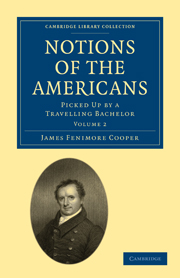Book contents
- Frontmatter
- Contents
- Lately Published
- LETTER I To the Count Jules de Béthizy
- LETTER II To the Abbate Giromachi
- LETTER III To the Same
- LETTER IV To the Count Jules de Béthizy
- LETTER V To the Baron Von Kemperfelt
- LETTER VI To the Abbate Giromachi
- LETTER VII To the Same
- LETTER VIII To the Count Jules de Béthizy
- LETTER IX To the Professor Christian Jansen
- LETTER X To Sir Edward Waller, Bart
- LETTER XI To the Same
- LETTER XII To the Professor Jansen
- LETTER XIII To the Count Jules de Béthizy
- LETTER XIV To the Abbate Giromachi
- LETTER XV To the Professor Christian Jansen
- LETTER XVI To Sir Edward Waller, Bart
- LETTER XVII To the Same
- LETTER XVIII To the Same
- LETTER XIX To the Count Jules de Béthizy
- LETTER XX To the Same
- LETTER XXI To Sir Edward Waller, Bart
- NOTES
LETTER XII - To the Professor Jansen
Published online by Cambridge University Press: 29 August 2010
- Frontmatter
- Contents
- Lately Published
- LETTER I To the Count Jules de Béthizy
- LETTER II To the Abbate Giromachi
- LETTER III To the Same
- LETTER IV To the Count Jules de Béthizy
- LETTER V To the Baron Von Kemperfelt
- LETTER VI To the Abbate Giromachi
- LETTER VII To the Same
- LETTER VIII To the Count Jules de Béthizy
- LETTER IX To the Professor Christian Jansen
- LETTER X To Sir Edward Waller, Bart
- LETTER XI To the Same
- LETTER XII To the Professor Jansen
- LETTER XIII To the Count Jules de Béthizy
- LETTER XIV To the Abbate Giromachi
- LETTER XV To the Professor Christian Jansen
- LETTER XVI To Sir Edward Waller, Bart
- LETTER XVII To the Same
- LETTER XVIII To the Same
- LETTER XIX To the Count Jules de Béthizy
- LETTER XX To the Same
- LETTER XXI To Sir Edward Waller, Bart
- NOTES
Summary
Congress necessarily rose on the night of the 4th of March. You must have learned from my previous letters, that a congress lasts but two years, commencing on the 4th of March of one year, and terminating on the 3rd of March of the year but one following. Of course it would be necessary to convene the new members, in order to proceed in legislation after the prescribed period. This can be, and has been, done, in times of need, but the usual practice is to let the bodies separate, at the end of what is called the “short session.” The terms of short and long session are easily explained. The constitution requires that congress should assemble on the first Monday in December of each year, unless it has adjourned to a different period, or is expressly convened by a call from the president. On the first year of the service of the members, it is plain they may sit as long as they please; but on the second, their term of service expires on the 3d of March. As one third of the senators, and perhaps about the same number of the representatives, usually retire every two years, it would be necessary to summon those who supply their places, should the public service require an immediate continuation of the legislative duties. The senate sometimes sits a day or two after the lower house has adjourned, in order to attend to what is called executive business (the approval of nominations to office).
- Type
- Chapter
- Information
- Notions of the AmericansPicked Up by a Travelling Bachelor, pp. 261 - 285Publisher: Cambridge University PressPrint publication year: 2009First published in: 1828



